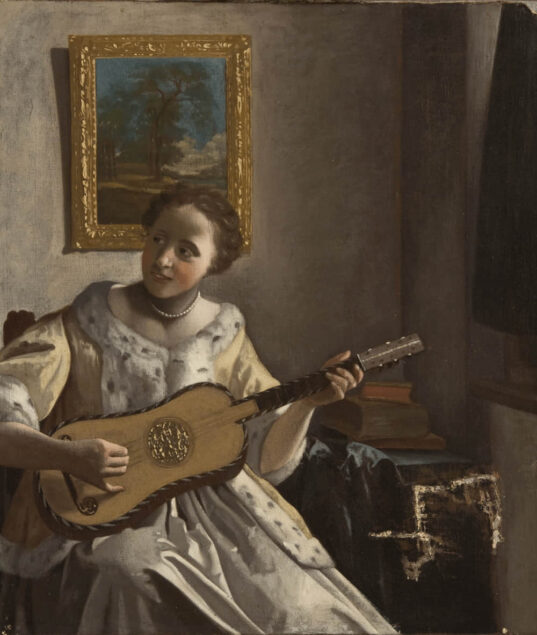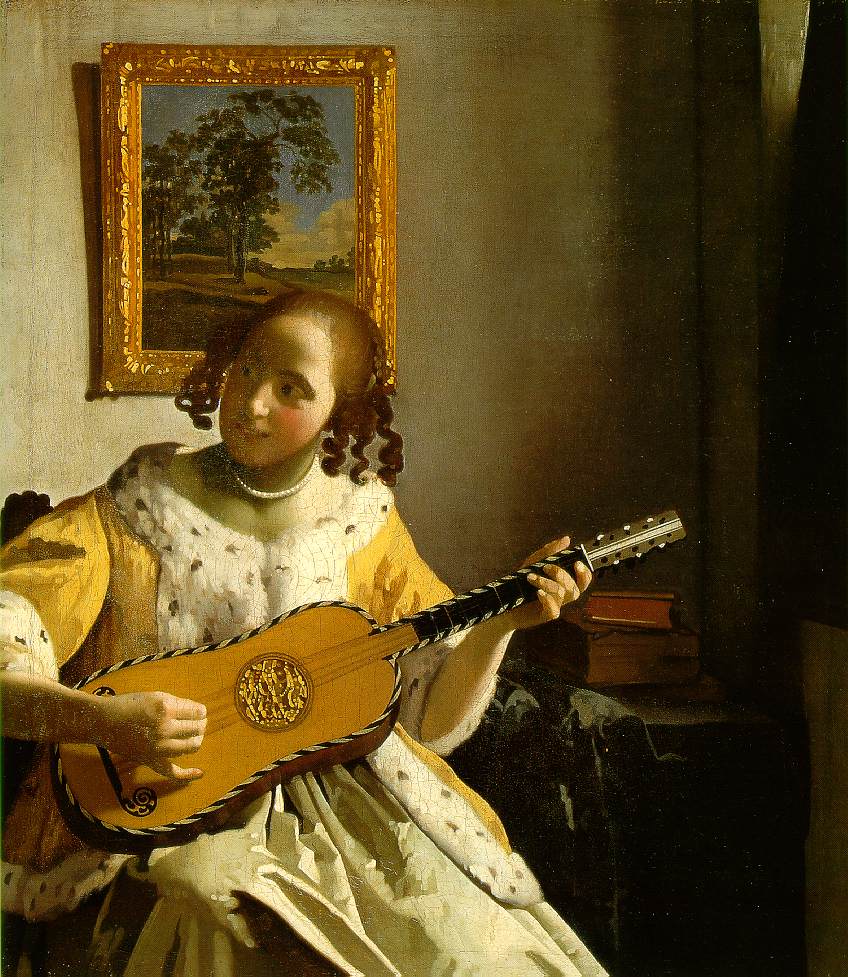Two paintings depicting the same subject, The Guitar Player – one signed by the great Johannes Vermeer (1632-75) and the other whose origins remain a mystery – are on display side-by-side for the first time in over 300 years. On loan from the John G. Johnson Collection at the Philadelphia Museum of Art, USA, this enigmatic painting joins the original Vermeer masterpiece at its home at Kenwood in London, where both are now on display, marking the 350th anniversary of Vermeer’s death in 1675, no doubt sparking much comparison and conversation.
The Guitar Player (1672) by Vermeer is an exquisite work of art, perfectly capturing a single moment in time. It is one of only 37 known paintings by Vermeer, an artist who specialized in depicting everyday life in domestic interiors. In this painting, a young woman looks up while playing her guitar, as the strings continue to vibrate. Today, Vermeer is considered one of the greatest painters of the Dutch Golden Age, and the rarity of his work has only increased his status. Across the Atlantic, however, in the Philadelphia Museum of Art, there is another remarkable painting, a near doppelgänger to The Guitar Player. Painted on similar-sized canvases, the paintings depict the same scene, a young woman with her guitar, but there are a number of differences; the main being that Kenwood’s sitter has her hair in ringlets, while Philadelphia’s does not and, perhaps most significantly, Kenwood’s painting is signed by the artist, while Philadelphia’s version is not. Originally thought to be a Vermeer, and then assumed to be a copy, the origins of the Philadelphia painting have been unclear.

(Copy after ?) Johannes Vermeer, Lady with a Guitar , ca. 1670-1720
John G. Johnson Collection, Philadelphia Museum of Art
One reason why visual comparison between the two works has been difficult thus far is that while Kenwood’s version is one of Vermeer’s best-preserved works and remains in near-original condition, the Philadelphia version is significantly altered. It is displayed in its unrestored state, giving visitors a rare opportunity to see a painting as it would appear in a conservation studio, with an old tear and effects of pre-20th-century cleaning efforts that caused damage to the paint fully visible.
During the past two years, the Philadelphia painting has been the subject of collaborative research enabling a comparison of materials, techniques and artistic process. The research has involved teams of scientists, conservators, curators and art historians from the Philadelphia Museum of Art in collaboration with the National Gallery of Art, Washington. New research has also been undertaken on the Kenwood painting by English Heritage and the National Gallery (London). The full conclusions of the research are not yet finalized, but tantalizing glimpses beneath the surface so far have revealed:

